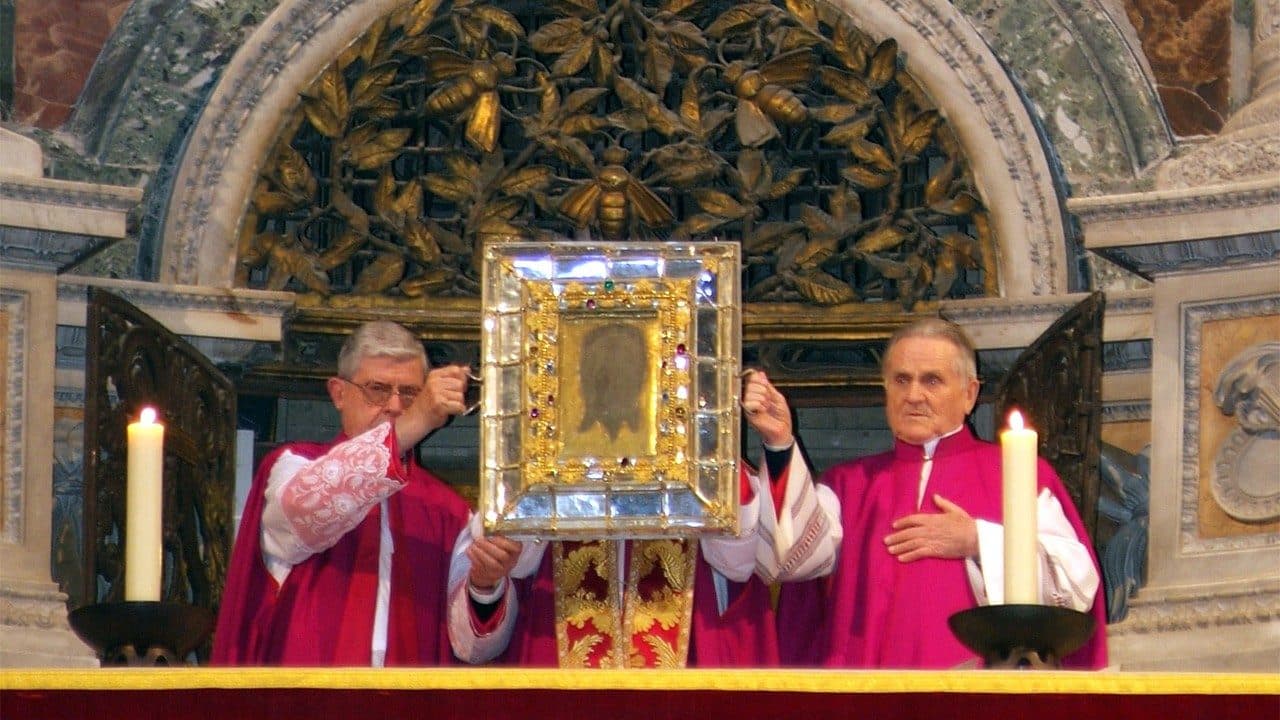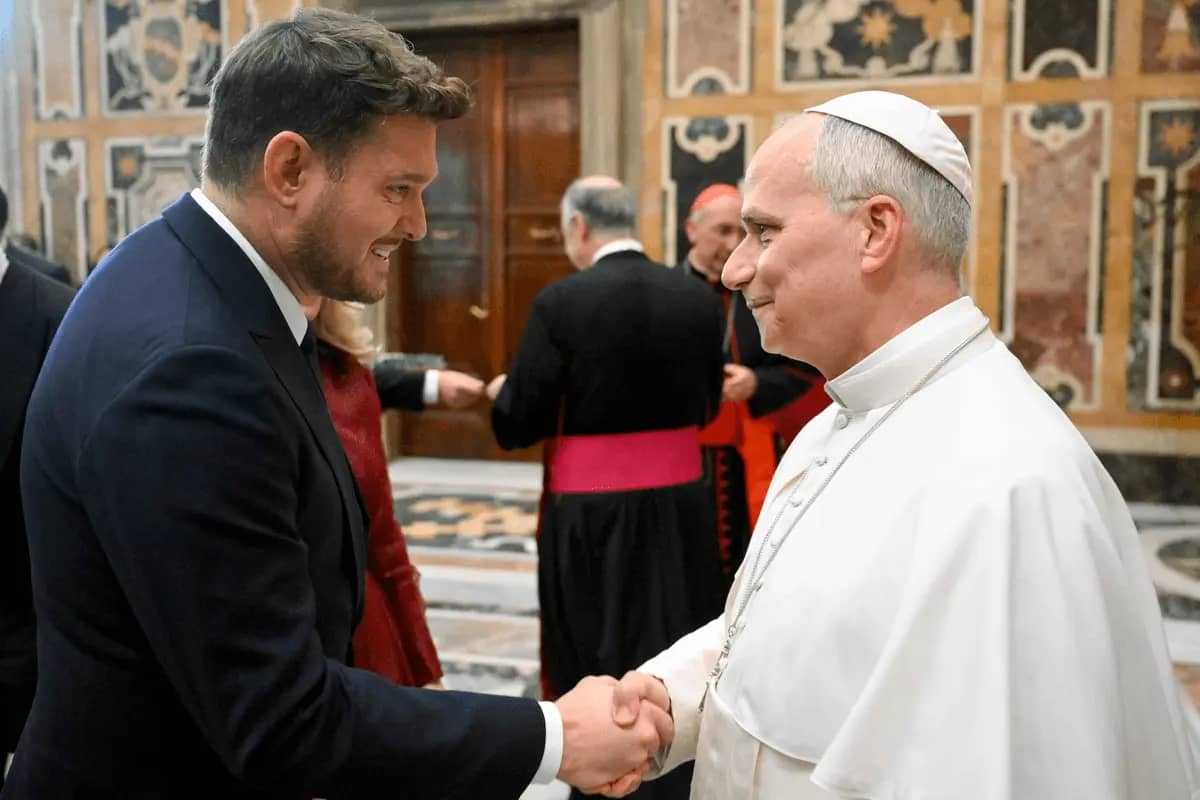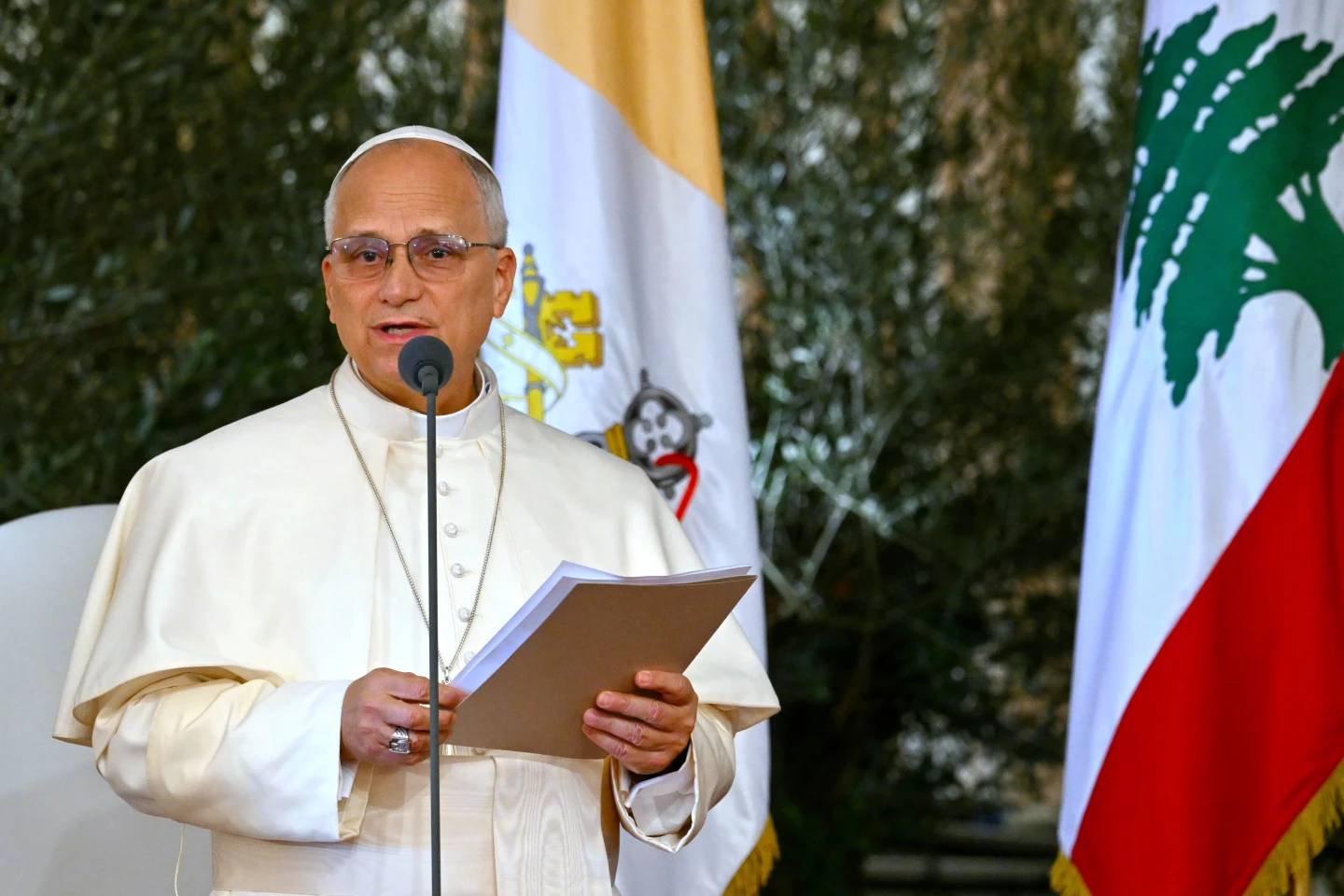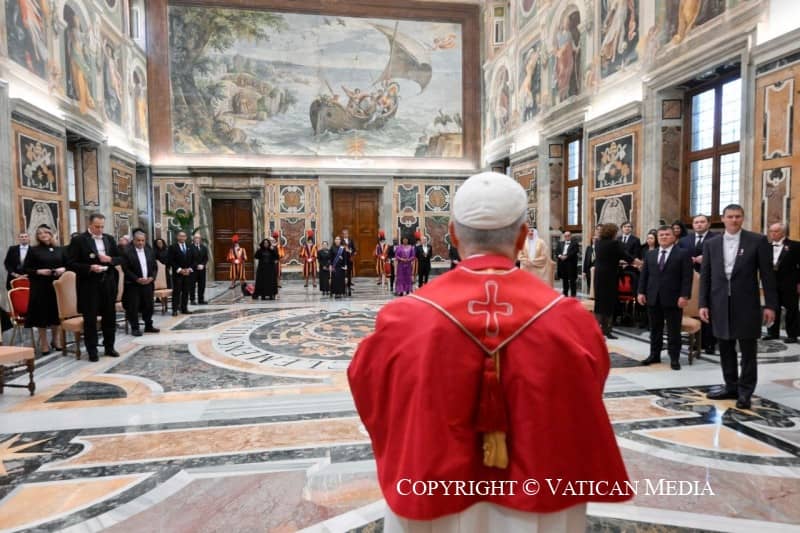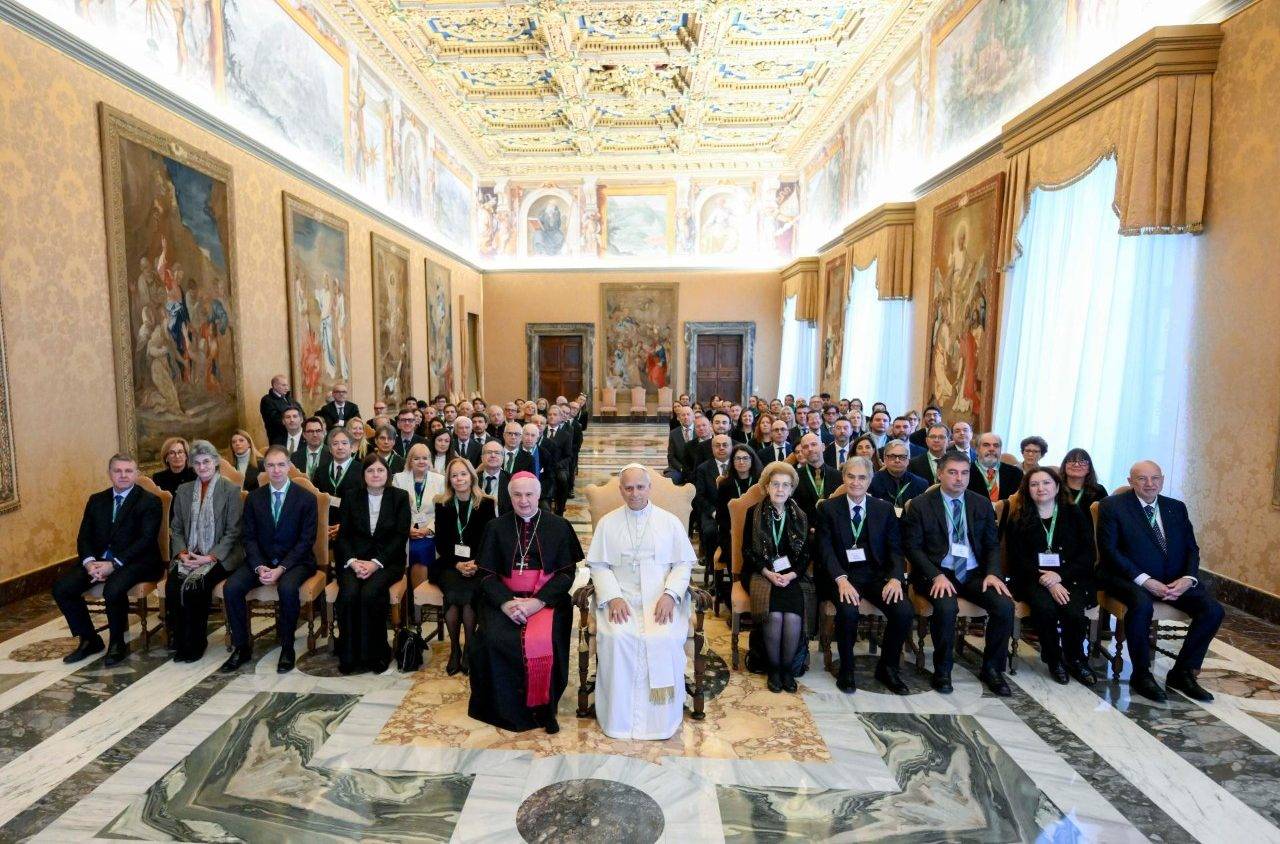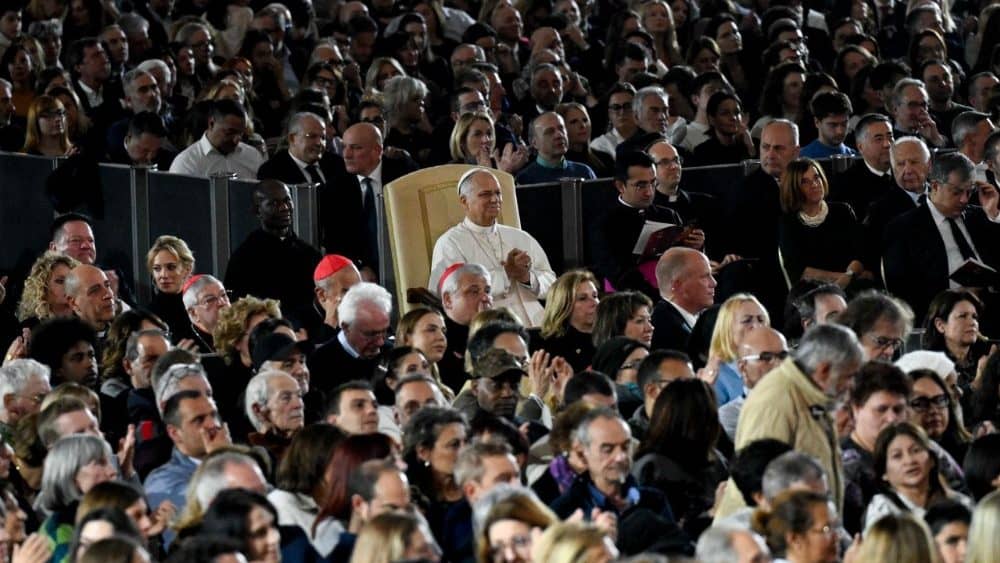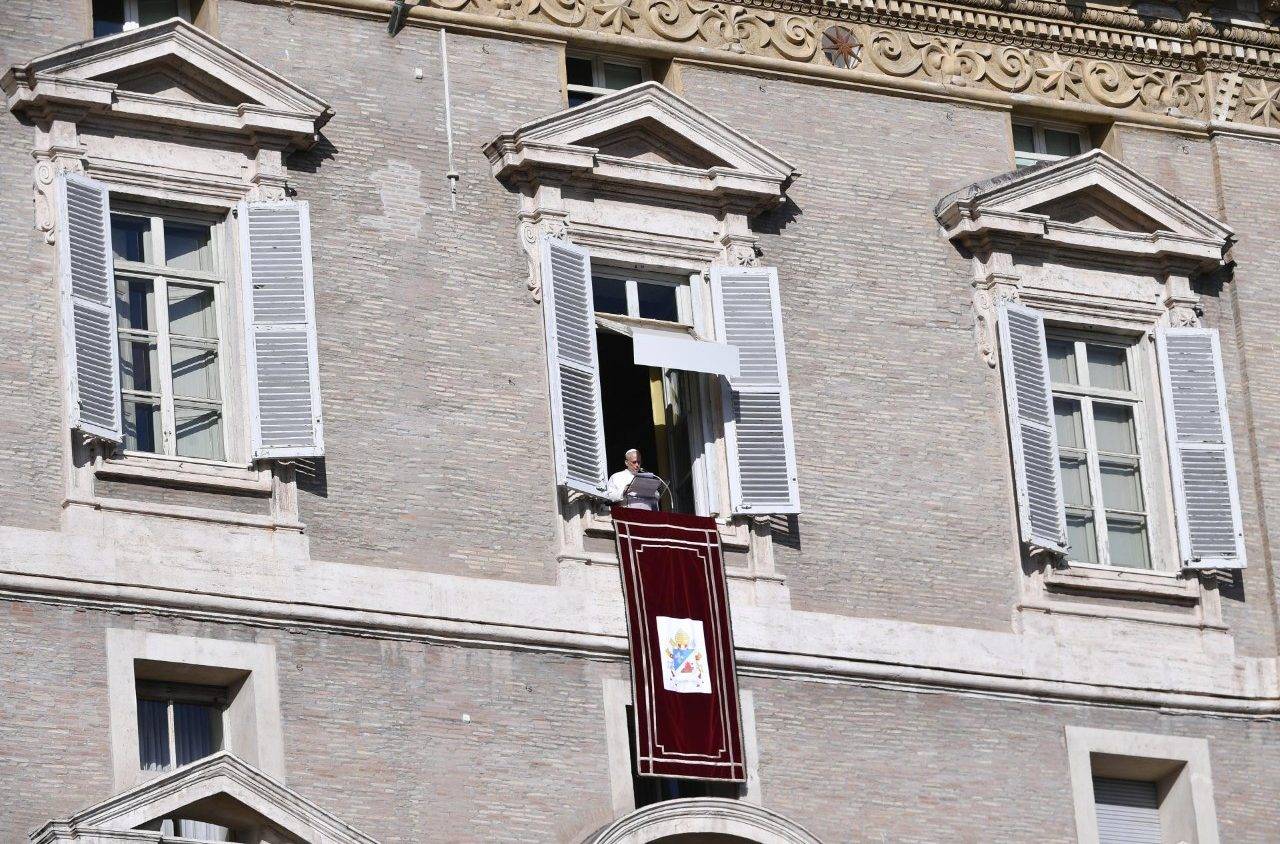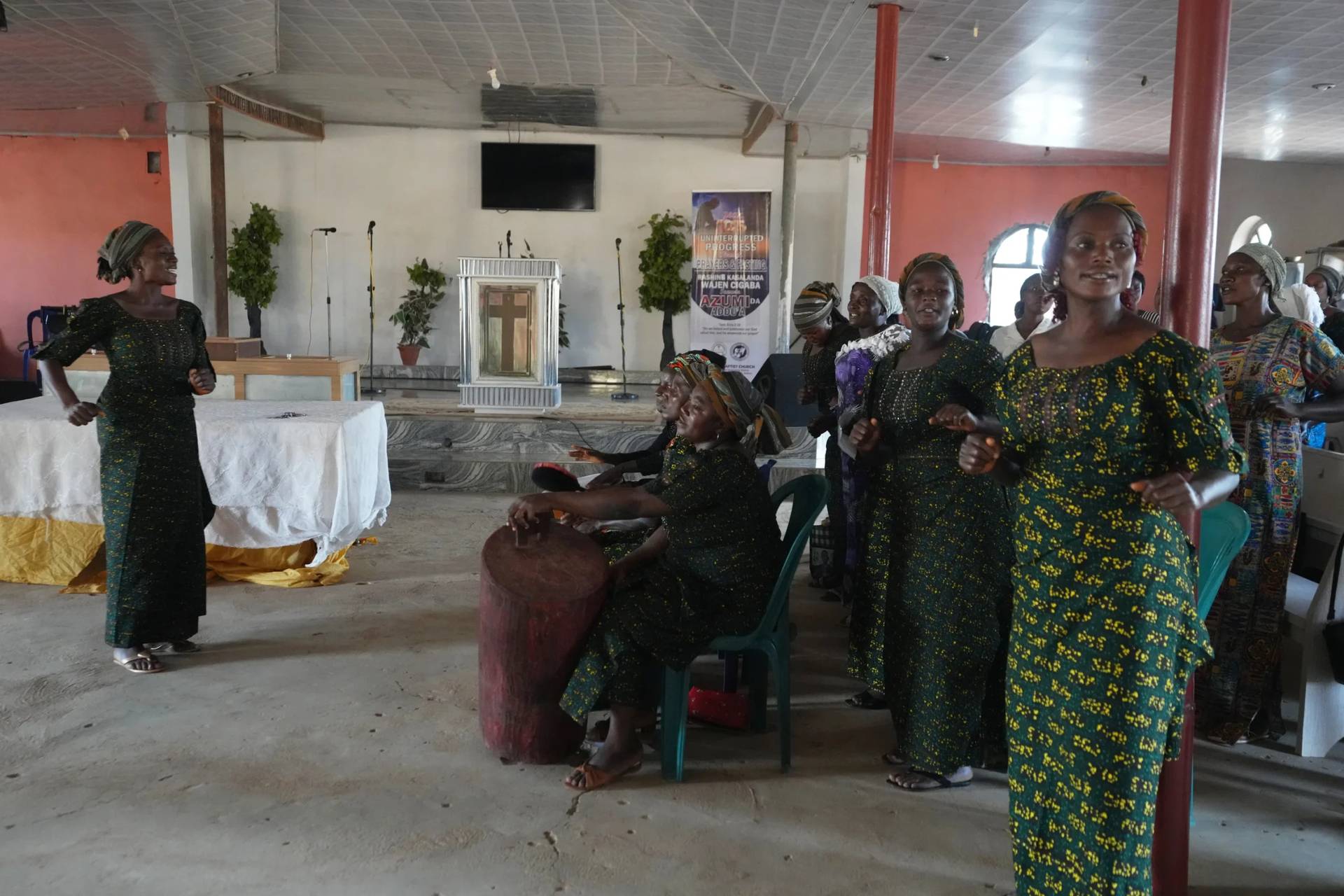ROME – A Vatican official and spokesman for St. Peter’s Basilica has said the ancient tradition of devotion to Veronica’s Veil and to the Holy Face of Jesus is a sign of hope and an invitation to return to the essentials in a world constantly connected and on the move.
“Ultimately Veronica’s gesture is a gesture of hope. Why? It makes us understand that man wants to support the other, that women want to support the other. This is hope,” Franciscan Father Enzo Fortunato told Crux.
Former head of the press office of the basilica and Franciscan friary in Assisi, Fortunato is currently the spokesman for St. Peter’s Basilica, a new position created by Pope Francis earlier this year, and is editorial director of St. Peter’s Square magazine.
While the Gospels don’t explicitly refer to the Veil of Veronica – an ancient Christian devotion to what is believed to be the divine imprint of Jesus’s face onto the veil of a widow named Veronica who used it to wipe his face while carrying the cross to Mount Golgotha, where he was crucified – Fortunato said it is “a beautiful devotion.”
Veneration of the veil “brings us back to the heart, beyond the veracity of the relic,” to the gesture itself, he said.
It is the same when people put up statues of saints, or other holy images or objects for veneration, he said, saying these are devotions that “bring us back to the experience or to traditions, and so it is for this relic.”
The Veil of Veronica is an ancient devotion in the Catholic Church, and while there are several alleged versions of the veil, the one conserved in St. Peter’s Basilica has been present since the 7th century, so for over 1300 years.
It is placed in a silver reliquary and stored inside one of the columns surrounding the main altar in St. Peter’s Basilica, above a statue of Veronica holding a veil, and displayed once a year on the fifth Sunday of Lent, the last Sunday before Palm Sunday, which marks the beginning of Holy Week.
This year the veil was displayed during a Sunday, April 6, liturgy in St. Peters Square, which was followed by Mass presided over by Italian Cardinal Mauro Gambetti, archpriest of St. Peter’s Basilica.
St. Peter’s Basilica this year was a “station church,” meaning it was part of an ancient tradition in Rome when faithful and pilgrims gather daily for 40 days at one of the churches in Rome where the relics of saints and martyrs are venerated to pray.
Fortunato, who was present at Sunday’s liturgy and exposition of Veronica’s Veil, noted that there are other versions of the veil believed to be authentic, including the famed and highly venerated Holy Face of Manoppello.
“We are not so much interested in the relic as in the veneration of the Holy Face of Jesus,” Fortunato said, saying the annual veneration of the veil in St. Peter’s “is a rite that leads us to venerate the Holy Face of Jesus and to translate this rite into our daily relationships.”
It is an invitation, he said, “to see the features of the face of Jesus in every person,” and it provides a central starting point “in the spiritual journey, in the journey of faith. The veneration of the Holy Face of Jesus.”
He pointed to other acheiropoieta relics, meaning those believed to be of divine origin, and not painted by human hands, including the Holy Face of Manoppello and the Holy Shroud of Turin, which is believed by many to be the burial cloth of Jesus.
Devotion to these sacred objects can be especially helpful during Lent, Fortunato said, noting that the three spiritual pillars of the Lenten season of prayer, fasting, and almsgiving, or acts of charity.
“I believe that the Holy Face of Jesus calls us to one of the central aspects of the spiritual journey and that is to see the face of Christ in the faces of people. I believe that today Christians lack this, above all,” he said.
While it is easy to pray in front of a statue or to perform a small act of charity, to live charity and to find Christ in one’s daily relationships, especially amid one’s sins and mistakes, is more difficult, he said.
Though the Gospels make no mention of Veronica or her wiping Jesus’s face, Fortunato noted that the streets of the Via Crucis that Jesus walked in Jerusalem are small, meaning it was easy for people to get close enough to spit on Jesus, which is mentioned in scripture, and it would have been just as easy for someone to approach him with an act “of compassion.”
Fortunato spoke of the tradition of pilgrimage to St. Peter’s for the annual exposition, and the prominence of pilgrimages in the ongoing Jubilee of Hope, which holds the theme, “Pilgrims of Hope.”
“The reasons for pilgrimage are different and certainly at the center is the desire to start a journey again, the desire to clean up one’s life from sin and the desire to re-establish a relationship as children of God,” he said, noting that there are many pilgrim destinations throughout Rome.
Pilgrimage is also a special aspect of the time of Lent, he said, saying, “Life is a journey. I believe that if we imagine life as a journey, it is easier to grasp the importance of the pilgrimage, (which) is putting oneself into motion to reach a destination.”
“Many of us today experience confusion and disorientation, there are no points of reference…The pilgrimage tells us instead that having a destination helps to build one’s life” and focus on “the essential in things, and that is, loading ourselves with a few things useful for the journey.”
In an increasingly globalized society filled with “ephemeral things that suffocate our existence and gradually close it in a fence,” the act of pilgrimage provides direction and depth to life, he said.
Fortunato voiced his belief that the message that devotion to Veronica’s Veil and the Holy Face of Jesus bring to modern society is “rediscovering the face” of God in the midst of the world.
“We live in a society that above all thinks of young people as connected on a virtual level, but (who are) little connected on a real existential level,” he said, adding, “Just attend a gathering of young people or a family gathering or lunch at home.”
Everyone sits with their cell phones “and there is no dialogue, there is no ability to look each other in the face, in the eyes,” Fortunato said, saying, “devotion to the Holy Face of Jesus calls and can be a stimulus to undertake a journey made of the ability to have real relationships that lead us to leave the virtual and recover the beauty of the real, of the face that I have before me every day.”
“Recovering this, I believe, is one of the most important challenges of today,” he said.
For a city and a world that is constantly in a rush and that wants everything immediately, “stopping is a great opportunity and also makes us understand the value of time,” he said.
Follow Elise Ann Allen on X: @eliseannallen
